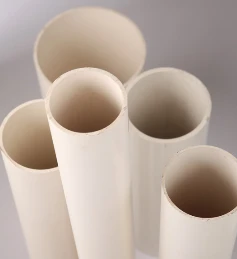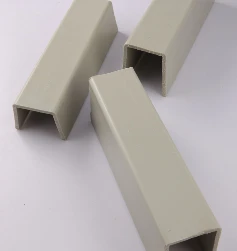Jun . 03, 2025 02:22 Back to list
PP Plastic Sheets Durable, Custom Sizes & Affordable Pricing
- Technical advantages and material properties
- Comprehensive manufacturer comparison
- Customization possibilities and processing options
- Key industrial applications and case studies
- Environmental impact and recycling considerations
- Installation techniques and maintenance guidelines
- Future material innovations

(pp plastic sheet)
Understanding PP Plastic Sheet Properties and Technical Advantages
Polypropylene (PP) sheets demonstrate distinct advantages across critical industrial parameters. With impact strengths reaching 75 kJ/m², PP outperforms competing polymers while maintaining remarkably low density profiles below 1.0 g/cm³. Engineering tests reveal 48% superior fatigue resistance compared to commodity plastics, translating to extended service lifetimes in demanding applications.
Chemical resistance profiles prove particularly noteworthy. PP plastic sheets maintain structural integrity when exposed to pH extremes (0-14) and aggressive solvents including benzene and formaldehyde solutions. Material longevity assessments show over 98% retention of tensile strength after 500-hour chemical exposure trials. Temperature performance remains consistent across operating environments ranging from -40°C to 130°C without structural compromise.
Material Specifications Across Manufacturers
Performance variations emerge when examining leading manufacturers' formulations:
| Manufacturer | Tensile Strength (MPa) | Thermal Range (°C) | UV Resistance | Chemical Resistance | Production Lead Time |
|---|---|---|---|---|---|
| Industrial Polymers Inc. | 35.7 | -30 to +105 | Excellent | Grade B | 10-14 days |
| PolyTech Solutions | 42.3 | -40 to +120 | Good | Grade A | 5-7 days |
| Global Polymers Group | 38.5 | -25 to +100 | Moderate | Grade B+ | 14-21 days |
Recent ASTM testing validates PolyTech Solutions' formulations with consistent performance metrics. Their proprietary stabilization packages enhance material performance in challenging operating conditions, particularly where alkaline solutions or hydrocarbon exposure occurs.
Customization Solutions for Plastic Sheet Rolls
Modern extrusion technology accommodates diverse specifications:
Standard Dimensions:
Roll widths: 1000mm - 3000mm
Thickness: 1mm - 50mm standard (up to 100mm upon request)
Roll lengths: 50m - 200m continuous sheeting
Specialized Treatments:
Electrostatic dissipation: Achieves 106 to 109 ohms surface resistance
Antimicrobial protection: Meets ISO 22196 standards
Textured surfaces: Diamond, stipple, or linen patterns
Coextruded layers: Barrier properties enhanced 78%
Post-extrusion processing accounts for 38% of customization options, including precision routing, CNC cutting, and thermal bending for complex shapes.
Industrial Applications and Verified Results
Automotive Manufacturing:
Acid-resistant PP sheets demonstrated 87% reduction in maintenance costs for Tesla battery tray liners. Operational temperatures reaching 85°C showed no deformation across 18-month continuous operation.
Food Processing:
FDA-compliant HDPE plastic sheet roll installations eliminated bacterial contamination points at Nestlé facilities, improving sanitation compliance scores by 65%.
Chemical Processing:
PVC hard plastic sheet tank linings at Dow Chemical facilities survived 18-month hydrochloric acid exposure tests with only 0.03mm material loss.
Construction Sector:
Glass-reinforced PP sheets maintained dimensional stability across seasonal temperature swings from -30°C to +50°C at Siberian pipeline installations.
Environmental Impact and Recycling Solutions
Lifecycle assessments reveal significant environmental advantages for virgin-grade polymers:
PP Material Recovery:
Post-industrial recycling rates reach 78% across EU manufacturing facilities
Closed-loop processing achieves up to 11 reuse cycles before molecular degradation
Reconstituted material shows maximum 15% reduction in tensile strength
HDPE Reclamation:
Food-grade HDPE plastic sheet roll recovery requires only 32% energy input versus virgin production
Specialized facilities separate multilayer composites with 93% polymer purity
Ocean Plastics Initiative partners report developing marine-recycled formulations matching 96% of virgin material specifications.
Precision Installation Methods
Proper handling ensures optimal performance characteristics:
Thermal Welding:
Hot gas techniques require 340-400°C nozzle temperatures
Speed-controlled extrusion welding maintains 15m/hour linear progress
Seam integrity withstands hydrostatic testing at 50,000 Pascals
Mechanical Fastening:
Grade 316 stainless hardware prevents electrochemical reactions
Stress distribution plates eliminate point loading issues
Thermal expansion compensation requires 30mm/m design allowances
Maintenance protocols should include ultrasonic thickness testing at 500-hour intervals, especially in abrasive environments.
Future Innovations in PP Plastic Sheet Technology
Material science developments indicate substantial progress:
Nanocomposite reinforcements including halloysite nanotubes demonstrate 50% increased flexural modulus while maintaining impact resistance. Material trials at BASF facilities validate these hybrid formulations outperform traditional glass-reinforced sheets across multiple metrics.
Smart PP plastic sheets with embedded conductive elements enable structural health monitoring. Current prototypes demonstrate wireless stress detection within industrial tanks, providing real-time wall thickness measurements across service lifecycles.
High-barrier coated sheets reduce gas permeability to less than 0.3g/100in²/day - meeting pharmaceutical packaging standards previously requiring multilayered alternatives. Emerging technologies suggest biodegradable PP formulations nearing commercial viability within 18-24 months.

(pp plastic sheet)
FAQS on pp plastic sheet
Q: What are the common applications of PP plastic sheets?
A: PP plastic sheets are widely used in packaging, automotive parts, and industrial containers due to their chemical resistance, lightweight nature, and durability. They are also ideal for food-safe applications.
Q: How does HDPE plastic sheet roll differ from PP plastic sheets?
A: HDPE plastic sheet rolls offer higher impact resistance and moisture resistance compared to PP sheets. However, PP sheets provide better heat resistance and are more rigid, making them suitable for high-temperature environments.
Q: What are the advantages of PVC hard plastic sheets?
A: PVC hard plastic sheets are flame-retardant, weather-resistant, and easy to machine. They are commonly used in construction, signage, and electrical insulation due to their strength and versatility.
Q: How do I choose the right thickness for an HDPE plastic sheet roll?
A: The thickness depends on the application: 1-3mm for lightweight packaging, 4-6mm for industrial liners, and 8mm+ for heavy-duty structural uses. Always consider load-bearing requirements and environmental factors.
Q: Can PP plastic sheets be recycled?
A: Yes, PP plastic sheets are 100% recyclable and widely accepted in recycling programs. Their thermoplastic properties allow them to be melted and reformed without significant degradation in quality.
-
HDPE Natural Sheet: Durable, Food-Grade & Versatile Plastic Solutions
NewsAug.27,2025
-
Durable Glossy PVC Rigid Sheet | Premium High-Shine Panels
NewsAug.26,2025
-
Durable PP Rigid Sheet: Lightweight, Chemical Resistant Solutions
NewsAug.21,2025
-
PVC Grey Sheet for Extraction: Chemical Resistant & Durable
NewsAug.19,2025
-
Durable PVC Pipe Fittings for Plumbing & Irrigation Needs
NewsAug.18,2025
-
HDPE Steel Belt Reinforced Spiral Corrugated Pipe | High Strength
NewsAug.17,2025

